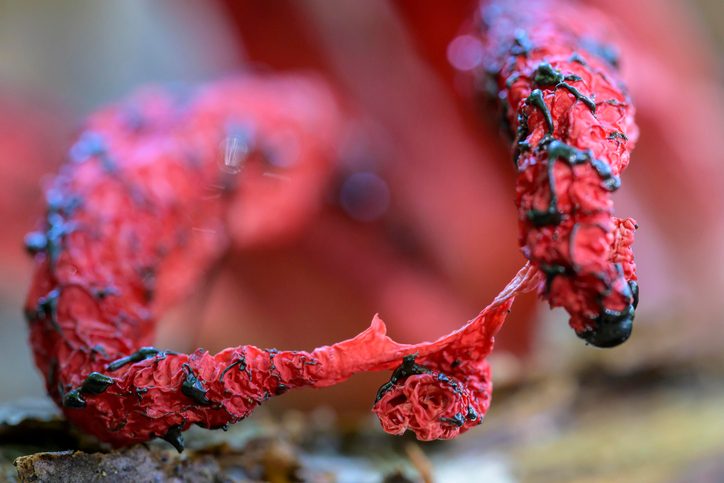Surely one of the weirdest fungi in the British Isles, or indeed anywhere in Europe, is the octopus stinkhorn, otherwise known as devil’s fingers.
It’s actually a southern hemisphere species, originally native to New Zealand and Australia – the leading theory is that its microscopic, dust-like spores hitched a lift to Europe in shipments of wool, timber and other natural products. Though it is still rare in its adopted range, sightings of the stinkhorn are now increasing in England, for reasons that remain a mystery.
 Octopus stinkhorn fungus growing from ‘eggs’. Credit: de:Benutzer:Oilys, CC BY-SA 3.0 http://creativecommons.org/licenses/by-sa/3.0/, via Wikimedia Commons
Octopus stinkhorn fungus growing from ‘eggs’. Credit: de:Benutzer:Oilys, CC BY-SA 3.0 http://creativecommons.org/licenses/by-sa/3.0/, via Wikimedia Commons
The octopus stinkhorn thrives in damp grassland, often near trees, and there is no mistaking its bizarre tentacled form. But the first indication of its presence is when a slimy ‘egg’ appears on the ground. This ‘hatches’ to reveal the tentacles, which are bright red, like raw flesh. The tentacles unfurl, much as an octopus opens its arms, and when mature are covered in a black goo that stinks of death.
The stench attracts flies, which leave smeared in the spore-containing gunk and thus spread the fungus. After a few days, the tentacles disintegrate, leaving a mushy mess in the grass.
Discover more amazing wildlife from around the world

